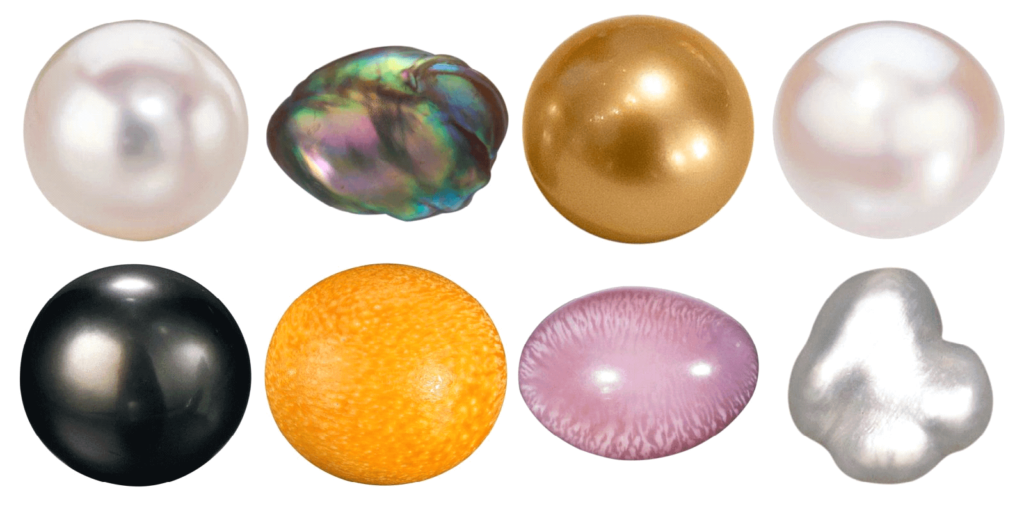PEARL
Pearls are produced either within the Mantle, in other Soft Tissues of the Oyster, or between the Mantle, and the Interior Surface of the Shell. Natural Pearls require the formation of the Pearl-Sac which is derived from the Internal or External layer of the Apithelium of the Mantle Tissue or Gill Plates. Specialized Epithelial Cells within the Pearl-Sac secret Nacre and is deposited on the Foreign Object.
Natural Pearl Formations


When the Mollusk is invaded by a Foreign Object that the Animal cannot eject, a process known as Encystation and entombs the offending entity in Successive, Concentric layers of ‘Nacre’ (Nay’ker). In a defensive response to the irritant, the Mollusk secretes Nacre as a Smooth, Protective Coating. Nacre is a combination of Crystalline and Organic Substances that form the iridescent Mother-of-Pearl lining of Mollusk Shells. The Nacre is secreted by the Epithelial Cells of the Mantle Tissue in certain species of Mollusk.
As the Nacre builds up around the irritant, it forms concentric micro-layers, eventually creating a Pearl. Natural Pearls that are both large in size (Diameter), and have a very symmetrical shape are extremely rare. For Pearls to form in nature it can take many years of near-perfect conditions for them to make a significant gain in size
The principle difference between “Natural” and “Cultured Pearls” is the thickness of the Nacre, and human intervention. Since Natural Pearls take longer to develop, there is generally a thicker layer of Nacre surrounding the Nucleus. It can take two to five years for a Quality Pearl to fully develop in the Oyster. Many lower quality Cultured Pearls are created by inserting a large Nucleus and hastening the process of Nacre development. This results in a Pearl with a very thin layer of Nacre that will not have a great deal of Luster, and will not be very durable over a long period.
Characteristics
Color: white, pink, silver, cream, brown, green, blue, black, yellow, orange,
Cleavage: None
Fracture: Uneven
Mohs scale hardness: 2.5–4.5[1]
Streak: white
Specific gravity: 2.60–2.85[1]
Refractive index
Common pearl: 1.52-1.66
Black pearl: 1.53-1.69
Birefringence: 0.156
Pleochroism: Absent
Dispersion: None
Ultraviolet fluorescence
White pearls: light blue to light yellow
Yellow and golden pearls: yellow-green, greenish brown to dark brown
Black Pearls: commonly pink to orange-red
